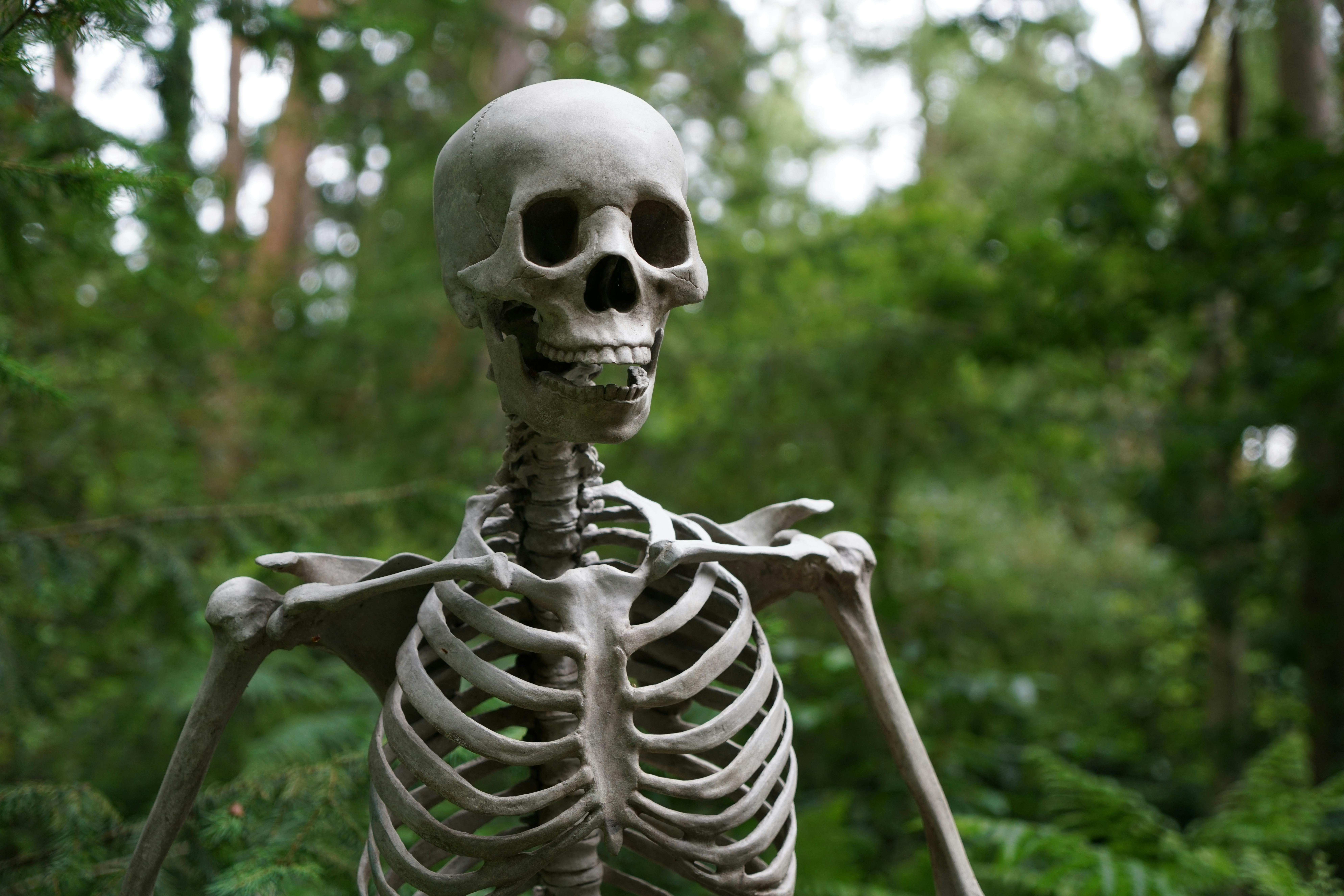Bones are a vital part of the human body, providing structure and support as well as playing a role in movement. Demineralization of bones is a process in which the minerals that give bones their strength and hardness are removed. This can occur naturally or due to external factors and can lead to weakened bones that are more prone to fracture. In this article, we will discuss what it means for bones to be demineralized and how it affects the body.When bones are demineralized, it means that the mineral content of the bones has been reduced. This can be caused by various factors, such as a lack of calcium or vitamin D in the diet, metabolic disorders, prolonged bed rest, or certain medications. Demineralization can lead to weakened bones that are more prone to fractures and breaks.
What Causes Demineralization of Bones?
Demineralization of bones is a common medical condition that can cause pain, inflammation, and loss of bone density. It is caused by a variety of factors, including poor nutrition, lack of physical activity, hormonal imbalances, and medications. Poor nutrition can lead to deficiencies in calcium, magnesium, and other nutrients that are important for bone health. Lack of physical activity can result in decreased bone density due to reduced weight-bearing activities. Hormonal imbalances can affect the body’s ability to absorb and use vitamins and minerals needed for healthy bones. Medications such as corticosteroids can also cause demineralization.
In addition to these causes, demineralization may be caused by an underlying medical condition or lifestyle habits such as smoking or excessive alcohol consumption. People with certain chronic diseases or conditions such as celiac disease, kidney disease, HIV/AIDS, inflammatory bowel disease (IBD), and diabetes are at increased risk for demineralization. The same is true for people with long-term diets that are low in calcium or vitamin D or who take certain medications over a long period of time. Smoking has been linked to decreased bone density due to its effect on hormones involved in calcium metabolism and vitamin D absorption; excessive alcohol consumption can also lead to reduced calcium levels in the body.
Symptoms of Bone Demineralization
Bone demineralization, also known as osteopenia, is a condition in which the bones become weak and brittle due to a lack of minerals in the body. This can lead to an increased risk of fractures and other bone-related injuries. The most common symptom of bone demineralization is joint pain, which may be accompanied by stiffness and swelling. Other symptoms may include bone fractures, decreased range of motion, and an overall feeling of weakness. In severe cases, bone demineralization can lead to osteoporosis, a more serious condition that can cause bones to break easily.
A decrease in bone density is one of the main signs of bone demineralization. This can be detected through a series of tests such as a dual-energy X-ray absorptiometry (DXA) scan or a computed tomography (CT) scan. These tests measure the amount of calcium and other minerals present in the bones and can help determine if there is any significant loss in density. Other tests that may be used to diagnose this condition include blood tests and urine tests, which measure levels of calcium and other minerals in the body.
Treatment for bone demineralization depends on its severity. Mild cases may be treated with lifestyle changes such as increasing calcium intake through diet or supplements, exercising regularly, and avoiding smoking and alcohol consumption. Medications such as bisphosphonates or calcitonin may also be prescribed to help strengthen bones by preventing further loss of mineral content. In severe cases, surgery may be necessary to repair damaged bones or replace them with artificial ones.
Diagnosis of Bone Demineralization
The diagnosis of bone demineralization is performed first and foremost through a physical examination. During the physical exam, a doctor will look for signs of bone demineralization, such as softening or thinning of the bones. X-rays may also be used to identify any areas of demineralization, as well as to measure the degree of bone loss. In some cases, a bone biopsy may be necessary in order to determine the cause of bone demineralization. Blood tests may also be used to detect any deficiencies in calcium, vitamin D, and other minerals that can contribute to bone demineralization.
In addition to physical exams and laboratory tests, computerized tomography (CT) scans can be used to measure the amount of calcium in bones. CT scans are able to create detailed images of the skeleton and can detect any areas where there is an abnormally low amount of calcium present. Magnetic resonance imaging (MRI) scans can also be used in order to detect any abnormalities in the structure or composition of bones that may indicate demineralization.
Bone density tests are another method that can be used in order to diagnose bone demineralization. This test uses X-rays to measure how dense or strong a person’s bones are. It is important for doctors to understand this information when it comes to diagnosing and treating conditions such as osteoporosis or other forms of bone loss due to demineralization.
Overall, the diagnosis for bone demineralization requires a combination of physical exams, laboratory tests, imaging studies, and other diagnostic tools in order for doctors to accurately diagnose and treat this condition. It is important that patients seek medical attention if they suspect they are suffering from symptoms associated with this condition so they can receive proper care and treatment in order to prevent long-term damage or complications from occurring.
Risk Factors for Bone Demineralization
Bone demineralization is a process that results in a decrease of minerals in the bones. This can lead to weakened bones, which can be a serious health concern. There are many factors that can cause the demineralization of bones, including age, certain medical conditions, medications, and lifestyle choices.
Age is one of the primary risk factors for bone demineralization. As people age, their bones naturally become more brittle and can easily break or fracture. Additionally, older adults are more likely to be prescribed medications that can contribute to bone loss.
Certain medical conditions, such as celiac disease and Crohn’s disease, have been linked to bone demineralization. These diseases interfere with the body’s ability to absorb important vitamins and minerals necessary for healthy bones. Additionally, people with diabetes may be at an increased risk of bone demineralization due to poor blood sugar control contributing to an imbalance in calcium levels in the body.
Certain medications that are commonly prescribed for older adults can also contribute to bone demineralization. These include corticosteroids such as prednisone and diuretics such as hydrochlorothiazide. Additionally, long-term use of proton pump inhibitors (PPIs) has been linked to decreased bone density and increased fracture risk.
Finally, certain lifestyle choices may also increase the risk of bone demineralization. This includes excessive alcohol consumption, smoking cigarettes or using other tobacco products, and consuming excessive amounts of caffeine or soda containing phosphoric acid which can interfere with calcium absorption in the body. Furthermore, people who follow a vegan or vegetarian diet may be at an increased risk due to lack of dietary calcium sources such as dairy products or other animal products like eggs or fish oil supplements.

Bone Demineralization Treatment
Bone demineralization, also known as osteoporosis, is a condition where bones become weak and brittle, leading to an increased risk of fractures. While it is most common in older adults, it can affect people of any age. Treatment for bone demineralization typically involves lifestyle changes such as diet and exercise modifications, as well as medications to increase bone density.
Nutrition plays an important role in bone health and can help prevent demineralization from occurring or slow its progression. Eating a diet rich in calcium and vitamin D is essential for maintaining healthy bones. Calcium can be found in dairy products, leafy green vegetables, nuts, fish, and certain fortified foods. Vitamin D can be obtained from exposure to sunlight or through certain foods such as fatty fish, egg yolks, and mushrooms.
In addition to diet modifications, regular physical activity is important for maintaining strong bones. Weight-bearing exercises such as walking or jogging help increase bone density by placing stress on the bones which stimulates them to produce more cells. Muscle-strengthening exercises are also beneficial for improving balance and coordination which can help reduce the risk of falls that may lead to fractures.
Medications are sometimes used to treat severe cases of bone demineralization. Bisphosphonates are the most commonly prescribed drugs for this condition and work by slowing down the breakdown of old bone cells so that new ones can form more quickly. Other medications may be used in combination with bisphosphonates depending on the severity of the condition.
In addition to lifestyle changes and medications, supplements are sometimes recommended for people with osteoporosis or at risk for developing it. Calcium supplements can help improve calcium levels in the body while vitamin D supplements can help absorb calcium from food sources more effectively. Magnesium supplements may also be beneficial since magnesium helps activate certain enzymes responsible for building new bone cells. It is important to speak with a healthcare provider before taking any type of supplement since some may interact with other medications or conditions that you have.
Maintaining a Healthy Diet to Prevent Bone Demineralization
Maintaining a healthy diet is important for preventing bone demineralization. Eating a balanced diet that includes calcium, vitamin D, phosphorus, and other essential nutrients can help keep bones strong and reduce the risk of developing osteoporosis. It is also important to limit intake of saturated fats, refined sugars, and processed foods which can increase the risk of bone loss.
Calcium is an essential mineral for bone health. Dairy products such as milk, cheese, yogurt, and cottage cheese are excellent sources of calcium. Fortified plant-based milks such as soy or almond milk also provide calcium. Other good sources include canned salmon with bones, fortified breakfast cereals, dark leafy greens such as kale and collard greens, almonds, sesame seeds and tahini.
Vitamin D helps the body absorb calcium and is important for maintaining strong bones. The best source of vitamin D is natural sunlight but it can also be found in fatty fish such as salmon and tuna, egg yolks, fortified orange juice and dairy products.
Phosphorus is another important mineral for maintaining healthy bones. Good sources include meat (especially organ meats such as liver), poultry, fish (especially sardines), eggs and dairy products like milk and cheese. Whole grains like oats, wheat germ and brown rice are also good sources of phosphorus.
In addition to these important minerals for bone health, it is also important to get adequate amounts of other essential nutrients such as magnesium, zinc and vitamin K2 which are found in foods such as nuts (especially almonds), green leafy vegetables (especially spinach) whole grains (such as quinoa), legumes (such as lentils) and fortified soy products like tofu or tempeh.
By eating a balanced diet that includes all the essential nutrients needed for bone health along with limiting intake of saturated fats, refined sugars and processed foods you can help prevent bone demineralization and reduce your risk of developing osteoporosis in the future.
Exercise Recommendations to Prevent Bone Demineralization
Regular physical activity is an important factor in maintaining bone health and preventing bone demineralization. Exercise can help to increase bone mass, reduce the risk of fractures, and improve muscle strength. There are a variety of exercises that can be beneficial for bone health, including weight-bearing exercises, resistance exercises, and balance exercises.
Weight-bearing exercises involve carrying your own body weight against gravity and can help to build strong bones. Examples of weight-bearing activities include walking, jogging, stair climbing, dancing, and playing sports such as basketball or tennis. It is important to do these activities on a regular basis in order to reap the full benefits for your bones.
Resistance exercises involve using weights or resistance bands to strengthen muscles and bones. Examples of resistance exercises include lifting weights, using weight machines at the gym, doing bodyweight squats or lunges, and performing pushups or pull-ups. Resistance training should be done two to three times per week for best results.
Balance exercises are also important for preventing bone demineralization and improving overall stability. Examples of balance exercises include standing on one foot for 30 seconds at a time or walking heel-to-toe along a straight line while counting each step out loud. These activities should be done several times per week in order to maintain balance and coordination.
In addition to exercise, it is also important to eat a balanced diet that is rich in calcium and vitamin D in order to maintain strong bones. Eating foods such as dairy products, leafy greens, fish with edible bones (such as sardines), nuts and seeds, fortified cereals and juices can help ensure adequate intake of these essential nutrients for bone health.
Finally, it is important to speak with your healthcare provider before beginning any exercise program if you have any existing medical conditions or injuries that may affect your ability to exercise safely. Your healthcare provider will be able to provide specific recommendations tailored towards your individual needs that will help you stay healthy and prevent demineralization of the bones.

Conclusion
When bones are demineralized, it means that minerals such as calcium and phosphorous have been removed from their structure. This can occur naturally or artificially through a process called demineralization, which is used in research and medical applications. Demineralization has a variety of benefits, including creating a porous material that can absorb dyes for tissue engineering and creating biomaterials for use in prosthetics. Demineralized bones can also be used to study the structure of bone and the effects of aging on its structure. In addition, they can be used to create artificial bone grafts for medical procedures. Finally, demineralized bones are often used in archaeological studies to help determine the age of remains.
Overall, demineralized bones have many uses in science and medicine and can provide valuable insight into the structure and composition of bone tissue.

